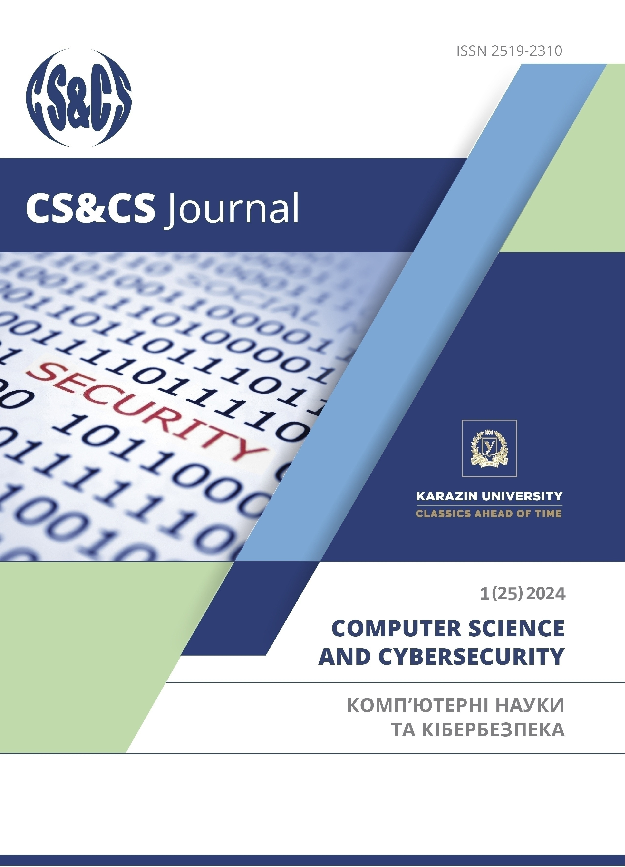Security in the era of wireless innovations: analysis of potential threats and protective measures
Abstract
In today's interconnected world, wireless data transmission technologies have seamlessly integrated into the fabric of modern business operations. As reliance on these technologies grows, so does the imperative to ensure robust cyber security measures. Particularly in the age of wireless innovations, exemplified by the proliferation of the Internet of Things (IoT), the discourse surrounding the security of wireless technologies underscores the necessity of comprehending both established threats and the continuous emergence of new vulnerabilities. This underscores the urgent need for timely detection and mitigation strategies. While the convenience afforded by wireless data transmission technologies grants society unprecedented access to information and facilitates the management of diverse devices, processes, and systems, it also exposes users and modern information and communication systems (ICS) to significant cyber threats and vulnerabilities. Consequently, there arises a pressing need to address these challenges comprehensively. This research dissects contemporary methodologies aimed at restricting access to wireless networks, identifying potential vulnerabilities, and crafting effective responses to cyberattacks. It delves into various facets of cyber security, including data encryption, user authentication mechanisms, traffic monitoring protocols, and anomaly detection algorithms. Furthermore, it delves into the crucial aspect of educating personnel on wireless security practices, equipping them with threat awareness and incident response capabilities. Given the dynamic landscape of cybersecurity technologies and threats, this work seeks to establish a foundational understanding of the security landscape within wireless networks. By doing so, it aims to outline pragmatic strategies for effectively managing security risks, thereby fortifying the resilience of modern organizations and safeguarding critical information assets.
Downloads
References
Kolovanova, E., Melkoziorova, O., & Malakhov, S. (2023). The specifics of exploits and the particularities of countering this threat. Proceedings of the XXIX International Scientific and Practical Conference. July 25-27 2023, Warsaw, Poland. 216-224. https://doi.org/10.46299/ISG.2023.1.29 [in Ukrainian]
Shi, Q. (2019). Edge computing-enabled internet of things: A review, challenges and open issues. IEEE Internet of Things Journal, 6(5), 1615-1630. https://doi.org/10.1109/jiot2019.2892052
Elkhodr, M., (2019). A systematic review of industrial wireless sensor networks applications in oil and gas, agriculture and water treatment. IEEE Access, (7), 116623-116634. https://doi.org/10.1016/j.csi.2011.03.004
Onishchenko, Y., Chukalov, K., Geldt, S., & Kalancha, A. (2023). Methodology of evil websites and add-ons using SQL-injection and countering it. Proceedings of the XII International Scientific and Practical Conference. March 28-31, 2023. Florence, Italy. 409-414. https://doi.org/10.46299/ISG.2023.1.12 [in Ukrainian]
Kunz, M., Puchta, A., Groll, S., Fuchs, L., & Pernul, G. (2019). Attribute quality management for dynamic identity and access management. Journal of Information Security and Applications, (44), 64–79. https://doi.org/10.1016/j.jisa.2018.11.004
Earle, A. E., Frost, R. D. (2012). Wireless Security Handbook. (2nd ed.). New York: Auerbach Publications.
Muhammad Ehsan Rana, Mohamed Abdulla, Kuruvikulam Arun. (2007). Common Security Protocols for Wireless Networks: A Comparative Analysis. IEEE Communications Magazine, 45(4), 143-149. https://doi.org/10.2991/ahis.k.210913.080
Lee, I., Lee, K. (2015). The Internet of Things (IoT): Applications, investments, and challenges for enterprises. Business Horizons, 58(4), 431–440. https://doi.org/10.1016/j.bushor.2015.03.008
Pogorila, K., Bogdanova, E., & Kolovanova, E. (2022). An overview of the possibilities and specifics of the implementation of XDR technology, as a means of comprehensively counteracting current threats to information security. Technologies, tools and strategies for the implementation of scientific research materials of the IV International Scientific Conference. Zhovten 7, 2022. Vinnytsia: European Science Platform. https://doi.org/10.46299/ISG.2023.1.22 [in Ukrainian]
K. Ramesh Rao, Dr. S.N. Tirumala Rao, Prof. P. Chenna Reddy. (2017) Wireless Communication Security and Privacy issues and Challenges. International Journal of Computer Science and Information Security (IJCSIS), 15(7), 202-209. https://www.academia.edu/34148630/Wireless_Communication_Security_and_Privacy_issues_and_Challenges, ISBN 1947-5500
IEEE. (2020). Recommendations for Wireless Network Security. IEEE Standards Association. https://standards.ieee.org/ieee/802.11/7028/
Arjona, G., Garcia, M. P., Gil, J. A., Gómez, J. A. (2018). Enhancing Network Security Using Software-Defined Networking (SDN). Journal of Cybersecurity and Privacy, 1(1), 45-53. https://doi.org/10.3390/electronics12143077
Gorbenko, I., Gorbenko, Y., Yesina, M., & Ponomar, V. (2017). Propositions from the new level analysis and acceptance during the competition are decided to overcome new asymmetric post-quantum cryptographic primitives. Computer Science and Cybersecurity, (1), 53-70. ISBN: 2519-23-10 https://periodicals.karazin.ua/cscs/issue/view/577/827 [in Ukrainian]
Pogorila, K., Lesnaya, Y., Bogdanova, E., & Malakhov, S. (2022). Social engineering as a factor in the implementation of insider threats. Scientific Collection "InterConf", (111), 494-501. https://archive.interconf.center/files/journals/3/issues/11/public/11-12-PB.pdf#page=495.%20ISBN%20978-1-0747-2337-8 ISBN 978- 1-0747-2337-8 [in Ukrainian]
Lesnaya, Yu., & Malakhov, S. (2023). Understanding the main changes in the implementation of phishing attacks. Proceedings of the XVII International Scientific and Practical Conference, 453-457. https://doi.org/10.46299/ISG.2023.1.17 [in Ukrainian]
Copyright (c) 2024 Computer Science and Cybersecurity

This work is licensed under a Creative Commons Attribution 4.0 International License.


